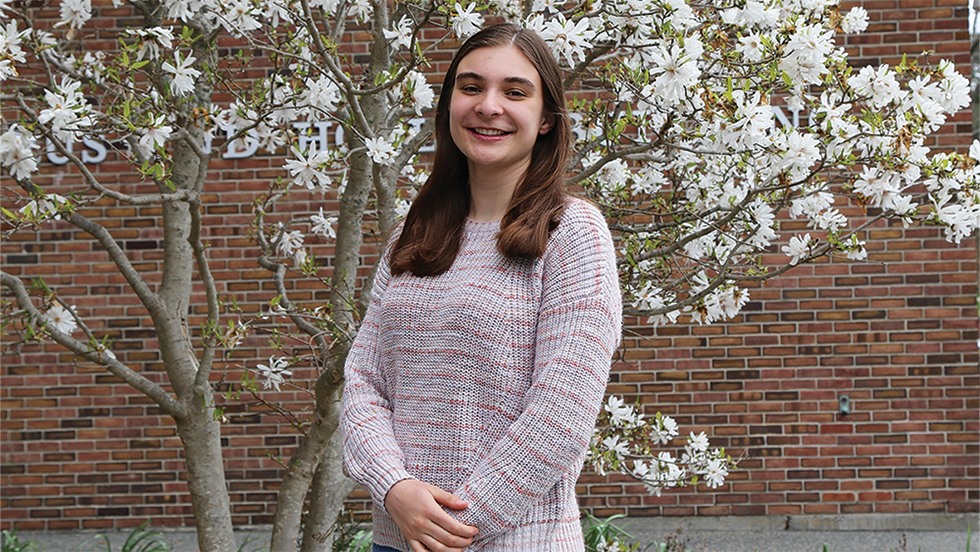Lizzie Kimmel entered Brown fluctuating between engineering, astrophysics and astronomy. She had always been interested in space, but was unaware of exactly where that might take her. “When I first contacted Professor [Rick] Fleeter, I didn’t really know what I could do. I just said I was interested in designing aircraft, or propulsion systems,” she said. “I didn’t really know what was possible.” Fleeter, an adjunct associate professor and champion of most things space-related at Brown, connected her with a possible aircraft to Venus project that had started in his Design of Space Systems class. “And that,” Kimmel said, “is what started this whole project.” Kimmel has since turned it into her mechanical engineering thesis and capstone, and was awarded the 2021 Doris M. and Norman T. Halpin prize, seed funding for an innovative design project.
She has spent the better part of a year and a half working with Fleeter and Professor Kenny Breuer to design an autonomous flight vehicle that could be launched to Venus. Her vision is that the vehicle flies continuously in Venus’ upper atmosphere (above the clouds where the temperature is not too extreme), and dives down for short test runs to sample the atmosphere and make scientific measurements searching for signs of microbial life.
To design the Venus Aero Vehicle, Kimmel had to master multiple engineering fields, including orbital mechanics to design an interplanetary trajectory from earth to Venus, heat transfer and X-band space communication protocols. She evaluated materials suitable for the harsh environment of Venus that would also be compatible with a solar powered vehicle. She researched and compared different launch vehicle capabilities (Falcon-9 and Rocket Labs Electron-class systems). And she mastered aerospace vehicle design and testing protocols.
“A recent potential discovery is that there could be phosphine in the atmosphere of Venus, a molecular compound that often is associated with life. So that discovery prompted people to be very interested and to want to probe the atmosphere to see what’s really there,” she explained.
“In previous missions to Venus, the most in-depth descent probes have been in one location, taken a few measurements, and died when they got to the surface because of the pressure and temperature. Nothing has been able to confirm the presence of life, or get measurements for a long period of time over a large range of altitudes, longitudes and latitudes. So this is an idea for a VAV that will cruise within the top of this cloud layer, getting direct sunlight and charging, because it runs on solar panels.
“With Venus’ high albedo [the proportion of the incident light reflected], not only do you get the light that is coming directly from the sun, but you also get the light reflected by Venus,” she said. “My design has solar panels on the underside of the wings. It also stays at solar noon, so it has to be able to overcome incredibly strong winds, which reach up to 102 meters per second at the top of the cloud layer.” When it then dives 50 km down into the cloud layer, the mass spectrometer onboard determines what elements are in the atmosphere.
“Venus is a hot topic right now,” Kimmel said. “Especially with the possibility of the phosphine in the atmosphere. There are a lot of proposals out there, and a few that are similar to mine. There is a chance that something like this could fly to Venus in the future.”
Aside from her interest in the manufacturing process and the newest technologies for manufacturing composites for creating this VAV, Kimmel is also a language lover who spent a year in Chile. While there, studying at the Pontifical Catholic University of Chile, she took four of her engineering courses. “I took materials science in Santiago, a course that at Brown, or anywhere, has hundreds of vocab words to learn,” she said. “Many of these materials science words then came up in this project, and I found I had to re-learn them in English,” she laughed. “But I really enjoyed the materials science course, which is why my thesis has significant details about the material selection and the properties of it.”
Once Kimmel returned from Chile, she joined Brown Space Engineering and has been part of the structures team (formerly manufacturing) since 2020. Structures is responsible for the design of the chassis of the newest cubesat PVDX, collaborating with avionics and other teams to figure out optimal designs for how packaging might work.
After graduation, Kimmel has decided to continue her studies at Georgia Tech, recently accepting a Clare Booth Luce Fellowship that supports women in underrepresented STEM fields. One thing is certain: If you give Lizzie Kimmel a little space, she will do great things.
